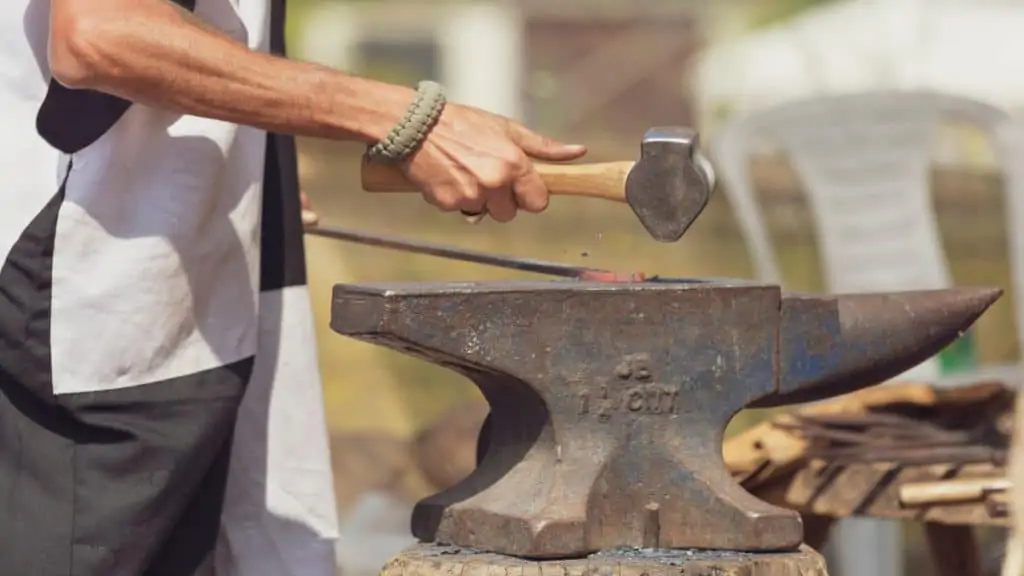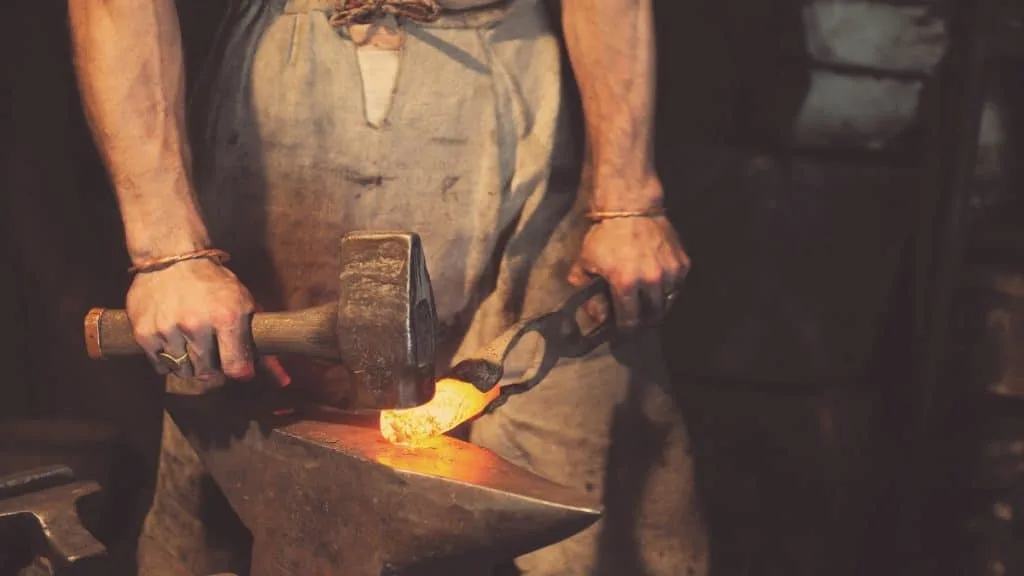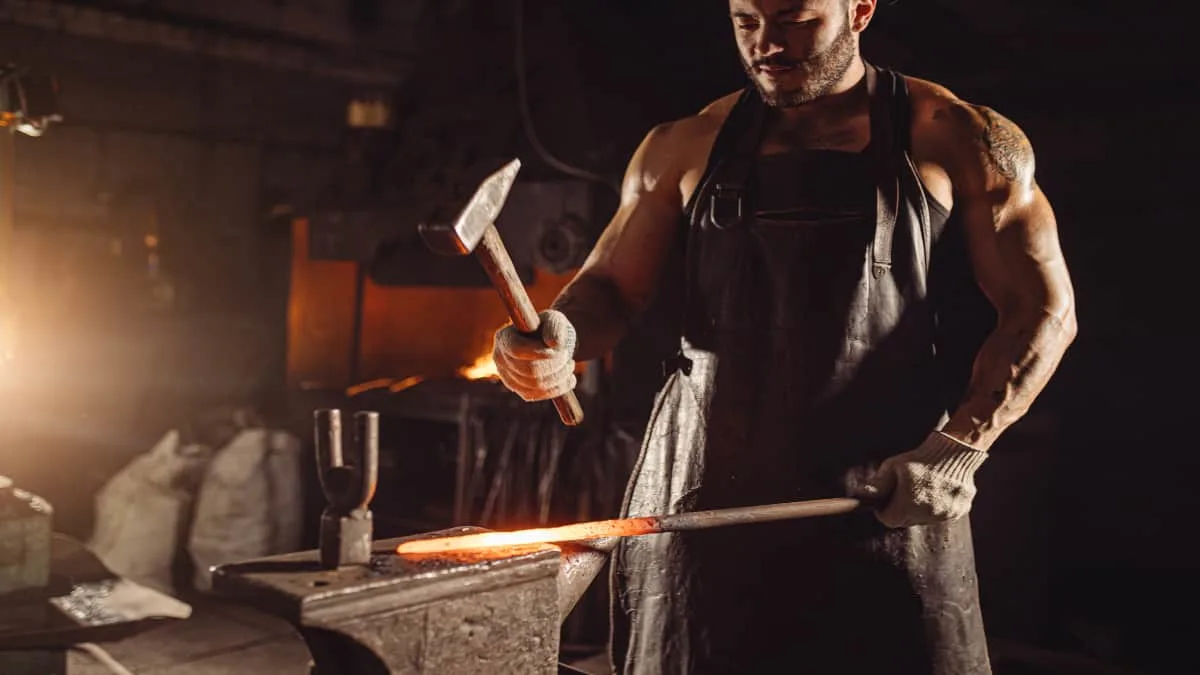Blacksmith forearms are a thing.
Perhaps you’re a blacksmith who’s wondering how your forearms have gotten so developed? Or maybe you’re a bodybuilder with lagging forearms who wants to know if manual labor is a good solution?
Either way, one thing’s for sure, the forearm anatomy consists of countless different muscles. And from my experience, manual labor, and in particular, blacksmithing, is one of the best ways to build lower arms that are not only well developed but also extremely strong.
Why do blacksmiths have muscular forearms?

Let’s start with the obvious. Anyone who hammers metal for hours at a time is going to have a huge brachioradialis, which is the muscle that—visually—sits between the bicep and lower forearm (though it is technically a forearm muscle).
There’s a reason why the hammer curl is widely considered one of the most effective brachioradialis drills. Maybe the gym bros got the name from blacksmiths?
As for the forearm flexors and extensors, which give the forearm most of its mass, these muscles get worked while you’re holding the heavy metal in place. Doing this also works what weight lifters would call your crushing strength, and it explains why manual laborers generally have very firm handshakes that could easily intimidate the average bodybuilder.
Will blacksmithing build the forearms more than weight lifting?

Even as someone with a fitness website, I’m not overly fond of many bodybuilding exercises. Why?
Well, many are downright dangerous (bench press); some only work when you have chemical assistance, and others are just downright dumb. Oh, and many bodybuilders have big beach muscles, but they don’t have strength where it really matters.
Therefore, I’d actually say that a blacksmith will, at the very least, have equal forearm development to a natural bodybuilder. But if that blacksmith has a decently sized frame and is fond of eating meat, fish, etc., then I reckon that he’ll build better forearms than your average meathead.
So bodybuilders, take note. If you want those blacksmith forearms, then you need to train more like a blacksmith.
How can you get blacksmith forearms?

By blacksmithing, of course!
Also, any comparable job or hobby will build decently muscular forearms.
But what if you don’t have the time or desire to perform manual labor?
Well, in that case, I recommend breaking out the hand grippers. I’ve heard countless stories about blacksmiths who were given a pair of supposedly heavy hand grippers and ended up closing/maxing them out on their first attempt.
So, in meathead-friendly language, train your grip.
Also, train your crushing and pinching strength. You can do this by holding a weight plate between your fingers for sets of 30 seconds. This’ll activate muscles that you didn’t even realize existed.
Aside from these drills, heavy farmer’s walks are good for building mass and keeping you fit. You can do them with dumbbells or a trap bar, but please, whatever equipment you decide to use, don’t use lifting straps, ok?
Other than that, throw in some hammer curls, a few sets of wrist curls, and maybe some other grip work.
From there, eat enough quality calories to support your training. Now people will think that you’re a blacksmith!
Related posts
Conclusion
Developing those blacksmith forearms takes patience. Like any muscle, the forearms need time to grow. You don’t start blacksmithing and, a week later, have huge forearms. No, it’s the repetition that builds the muscle, and this takes a few months to show in most cases.
Of course, some blacksmiths have regular forearms. This is also normal. But please understand that in this muscle-obsessed world, the gym-going population has a different standard for what’s considered strong and muscular.
But I can assure you, when you give that meathead a crushing handshake as a blacksmith, he’ll soon get the message that he needs to pick up the hammer and do some real work like his fathers probably did.
References
- Wikipedia contributors. (n.d.). Blacksmith. Wikipedia. https://en.wikipedia.org/wiki/Blacksmith

